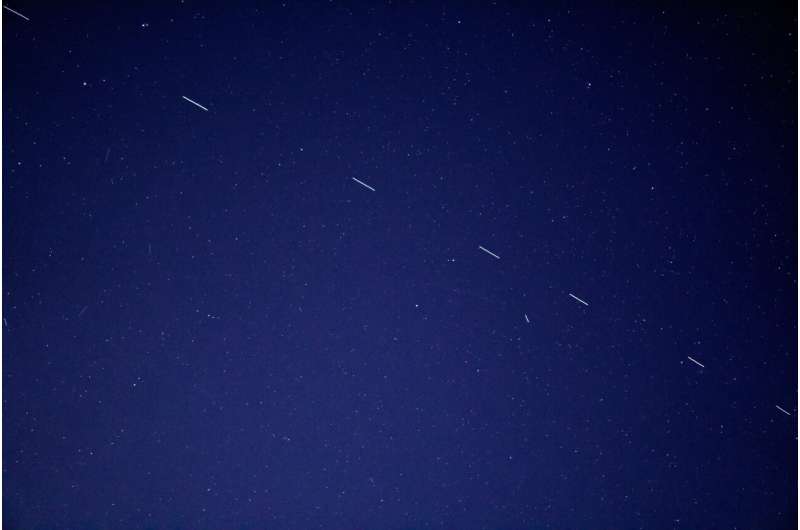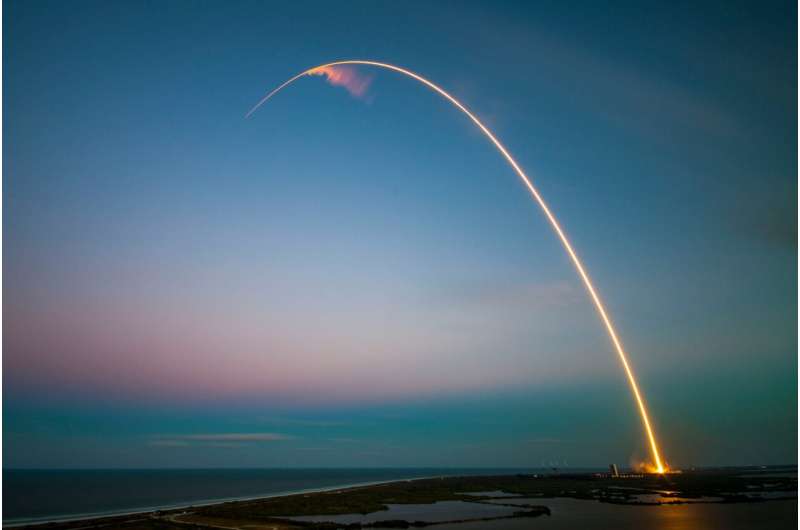
Copernical Team
Planet beefs up AgData with launch of Field Boundary detection technology
 Planet Labs PBC (NYSE: PL) this week unveiled its latest innovation, Field Boundaries, as part of its advanced Planetary Variables data feed series, and marking a significant advancement in agricultural data and insights.
Field Boundaries aims to revolutionize the infrastructure for agricultural solutions by offering unparalleled precision in regional crop monitoring and yield predictions
Planet Labs PBC (NYSE: PL) this week unveiled its latest innovation, Field Boundaries, as part of its advanced Planetary Variables data feed series, and marking a significant advancement in agricultural data and insights.
Field Boundaries aims to revolutionize the infrastructure for agricultural solutions by offering unparalleled precision in regional crop monitoring and yield predictions MAIAR, Ursa Space partner for Geospatial Analytics for UK Ministry of Defence
 Ursa Space Systems Inc., a leader in satellite insights, has partnered with MAIAR, a UK small business specializing in the Defence Intelligence arena, to enhance geospatial and open source analytics for NATO, with specific focus on benefitting operational users in the United Kingdom.
This collaboration leverages MAIAR's deep understanding of mission intricacies and Ursa's cutting-edge anal
Ursa Space Systems Inc., a leader in satellite insights, has partnered with MAIAR, a UK small business specializing in the Defence Intelligence arena, to enhance geospatial and open source analytics for NATO, with specific focus on benefitting operational users in the United Kingdom.
This collaboration leverages MAIAR's deep understanding of mission intricacies and Ursa's cutting-edge anal The psychological barrier of deep space exploration
 Within the next few decades, NASA aims to land humans on the Moon, set up a lunar colony and use the lessons learned to send people to Mars as part of its Artemis program. While researchers know that space travel can stress space crew members both physically and mentally and test their ability to work together in close quarters, missions to Mars will amplify these challenges. Mars is far away -
Within the next few decades, NASA aims to land humans on the Moon, set up a lunar colony and use the lessons learned to send people to Mars as part of its Artemis program. While researchers know that space travel can stress space crew members both physically and mentally and test their ability to work together in close quarters, missions to Mars will amplify these challenges. Mars is far away - Exolaunch Triumphs with 28 Satellite Deployments on SpaceX's Transporter-10 Mission
 Exolaunch, a global leader in launch mission management and satellite deployment services, announced the successful deployment of 28 customer satellites during the SpaceX Transporter-10 Rideshare mission. The mission, executed on March 4, 2024, at Vandenberg Space Force Base in California, marks another significant achievement for Exolaunch in supporting the commercial space sector and the small
Exolaunch, a global leader in launch mission management and satellite deployment services, announced the successful deployment of 28 customer satellites during the SpaceX Transporter-10 Rideshare mission. The mission, executed on March 4, 2024, at Vandenberg Space Force Base in California, marks another significant achievement for Exolaunch in supporting the commercial space sector and the small SpaceX sends 46 Starlink satellites to orbit in consecutive launches
 SpaceX on Sunday launched a total of 46 Starlink satellites into orbit in back-to-back launches in Florida and California. Against the backdrop of broken clouds and Florida swampland at dusk, SpaceX launched 23 Starlink satellites into low-Earth orbit from Cape Canaveral Space Force Station, the latest in a series of Falcon 9 launches.
The engines roared to life and sent the rocket off the
SpaceX on Sunday launched a total of 46 Starlink satellites into orbit in back-to-back launches in Florida and California. Against the backdrop of broken clouds and Florida swampland at dusk, SpaceX launched 23 Starlink satellites into low-Earth orbit from Cape Canaveral Space Force Station, the latest in a series of Falcon 9 launches.
The engines roared to life and sent the rocket off the Aireon Launches Global Coalition for Space-Based VHF Aviation Communication
 Aireon is at the forefront of aviation innovation with the establishment of the Aireon Space-Based VHF Coalition, a collaborative initiative aimed at developing space-based VHF voice and data communication services for the aviation sector. This marks a significant leap towards enhancing global air traffic safety and efficiency.
The coalition sees the partnership of industry giants includin
Aireon is at the forefront of aviation innovation with the establishment of the Aireon Space-Based VHF Coalition, a collaborative initiative aimed at developing space-based VHF voice and data communication services for the aviation sector. This marks a significant leap towards enhancing global air traffic safety and efficiency.
The coalition sees the partnership of industry giants includin Exploring the Final Frontier: The Role of Alcohol in Space Exploration
 Throughout the annals of history, alcohol has not only been a staple of human civilization but also a significant cultural and social element that has accompanied many of humanity's most monumental moments. As our gaze turns skyward and our ambitions reach for the stars, the intriguing question emerges: How will alcohol fit into the future of space exploration and settlement? "Alcohol in Space" by Chris Carberry.
Throughout the annals of history, alcohol has not only been a staple of human civilization but also a significant cultural and social element that has accompanied many of humanity's most monumental moments. As our gaze turns skyward and our ambitions reach for the stars, the intriguing question emerges: How will alcohol fit into the future of space exploration and settlement? "Alcohol in Space" by Chris Carberry. Crew-7 astronauts depart ISS after nearly 200 days in space

After a slightly extended stay on board the International Space Station, four astronauts from four international space agencies climbed aboard the SpaceX Crew Dragon Endurance and began their return trip to Earth.
Crew-7 is made up of NASA astronaut Jasmin Moghbeli, European Space Agency (ESA) astronaut Andreas Mogensen, Japan Aerospace Exploration Agency (JAXA) astronaut Satoshi Furukawa and Roscosmos cosmonaut Konstantin Borisov.
The quartet that launched from Kennedy Space Center back on Aug. 26, 2023 arrived to the ISS one day later to begin their 197-day stay, the second longest among the now eight completed SpaceX Crew Dragon trips so far to the ISS under NASA's Commercial Crew Program. Only Crew-2 in 2021 bested their stay, and by just one day.
They departed the station at 11:20 a.m. EDT and now have a more than 18-hour ride home. Depending on the weather, they are slated to splash down at one of seven target locations off the coast of Florida in either the Atlantic or Gulf of Mexico on Tuesday around 5:50 a.m. EDT with live coverage beginning on NASA TV at 4:30 a.m.
SpaceX knocks out Canaveral launch during busy week with Crew-7 return, possible Starship launch

SpaceX sent up another batch of Starlink satellites on Sunday night from the Space Coast while prepping for the return of Crew-7 from the International Space Station and the potential third test flight of the Starship and Super Heavy.
A Falcon 9 carrying 23 of SpaceX's internet satellites for its growing constellation lifted off at 7:05 p.m. Eastern from Cape Canaveral Space Force Station's Space Launch Complex 40.
The first-stage booster flew for the 11th time with a recovery landing on the droneship Just Read the Instructions downrange in the Atlantic.
SpaceX said the fairings for the mission were used only 25 days ago when they launched on the USSF-124 mission, and this marks the fastest turnaround for fairing reusability,.
This was the 16th launch from the Space Coast in 2024, but the beginning of a busy week for SpaceX as it's set to launch more Starlink satellites from California a few hours later on Sunday night, more from Cape Canaveral as early as Wednesday and support the return of the Crew Dragon Endurance from the International Space Station with its four passengers on the Crew-7 mission.
Astra Space goes private as it recovers from Space Coast launch failures

The value of publicly traded Astra Space has been falling since it shelved a rocket design that only went for 2 for 7 on launches, including two highly visible failures from the Space Coast. Now the company is going private.
Once valued at more than $2.1 billion, the Alameda, California-based company closed at about $20 a share on the Nasdaq Stock Market in February 2021, months before its first orbital success with its Rocket 3 design. It has since made a steady drop in value. including the threat of delisting from Nasdaq last year and the potential for bankruptcy looming.
The deal announced Thursday calls for a group that includes company cofounder and CEO Chris Kemp and cofounder and CTO Adam London to buy back company shares for $0.50 per share. The stock was trading at $0.55 on Friday morning. The closing price was $0.86 per share on Wednesday.
The takeover transaction is expected to close in the second quarter of 2024.
The company managed to reach orbit in November 2021 during a demonstration flight for the Space Force from Alaska and that led to its first launch attempt from Cape Canaveral Space Force Station in March 2022.

